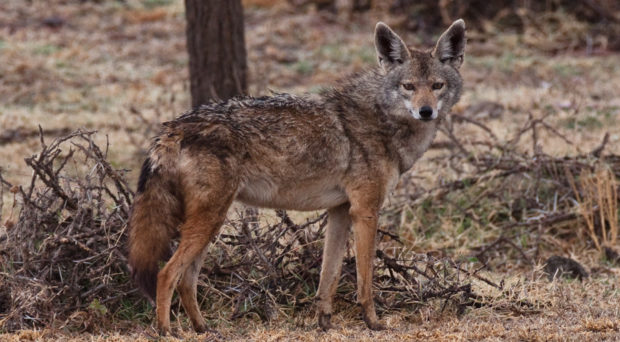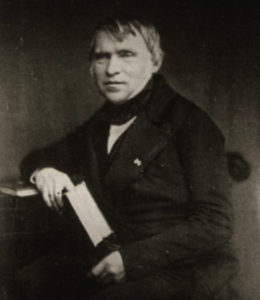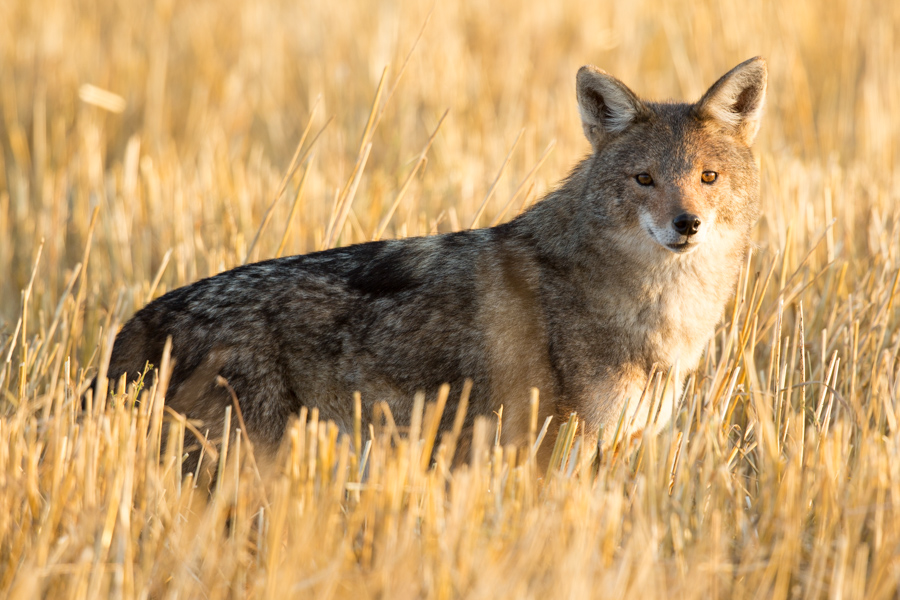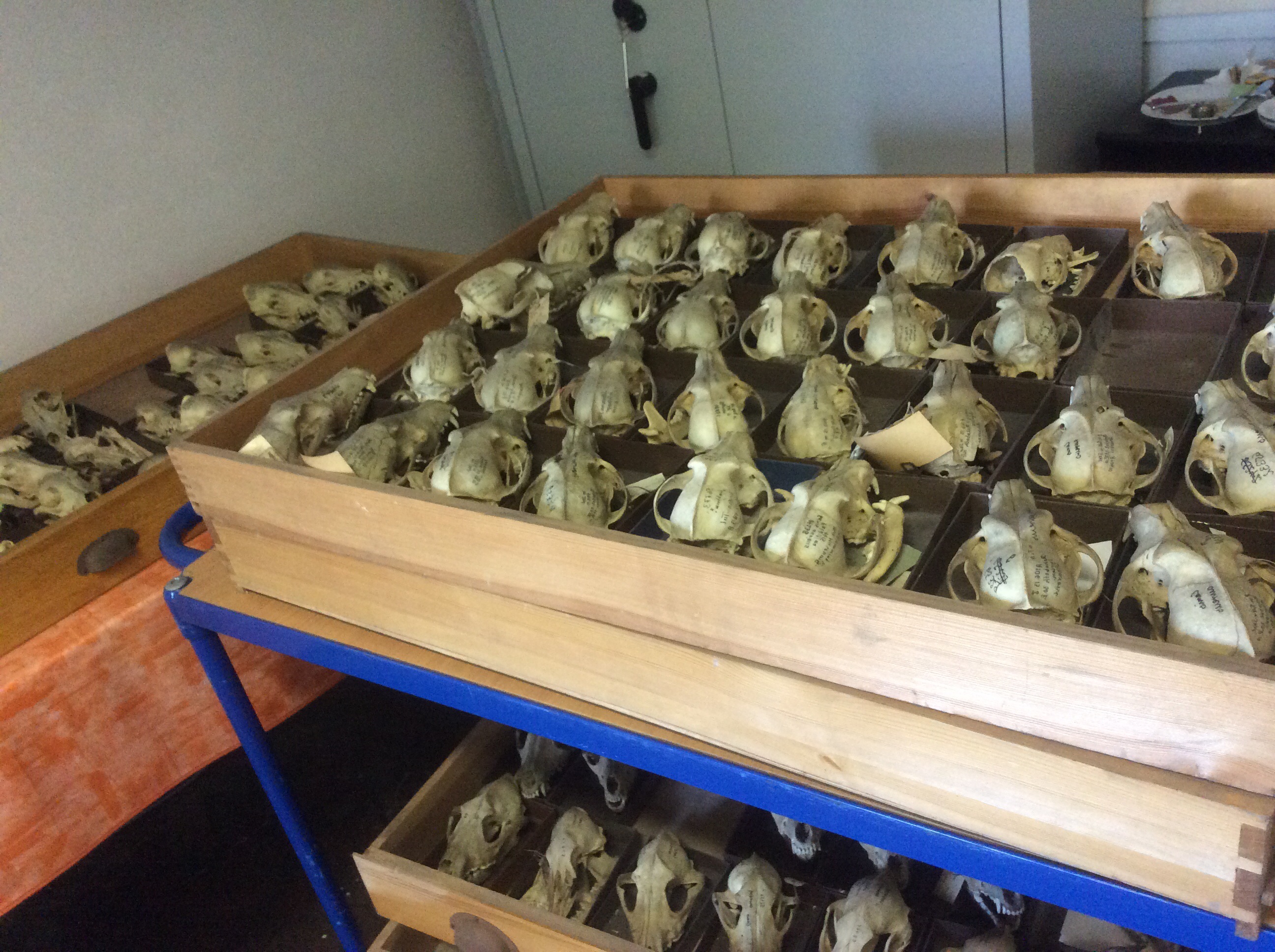
Discovery of the African wolf
In 1820, two German scientists travelled to Egypt and East Africa on a scientific expedition. Wilhelm Friedrich Hemprich (a comparative physiologist) and Christian Gottfried Ehrenberg (a comparative anatomist, famous also for his work on paleontological micro-organisms) made observations and collected both botanical and animal specimens.
Sadly, Hembrich did not survive the trip. Ehrenberg returned alone, and published papers on their findings in several volumes. In the volume on mammals of boreal Africa and western Asia (now available electronically at https://www.biodiversitylibrary.org/) he described a canid (i.e. a member of the dog family) species as an Egyptian wolf, Canis lupaster, referring to its wolf like appearance.

During the 19th century and early 20th century, zoologists continued to recognize this medium-sized canid in Sub-Saharan Africa. Some scholars thought there were two species: the larger eastern form, the wolf lupaster, and a smaller western form. Some also suggested the western form could be the same as the golden jackal found in Asia.
When Glover Morrill Allen, the American zoologist and curator for the Museum of Comparative Zoology, published a checklist of African Mammals in 1939, he omitted the wolf entirely and synonymized both forms with the Eurasian golden jackal (Canis aureus). This synonymy became commonly accepted. Interestingly, some physiological (e.g. Tembrock) and paleontological (e.g. Geraads 2011) works continued recognizing the African species as a separate one. This African species was most often called Canis anthus.

Scats and skulls led to the rediscovery of the African wolf
Members of our group studied canids in Ethiopia when DNA from a scat sample collected from the Guassa highlands showed similarities to the Eurasian gray wolf. Originally this scat was thought to come from a rodent-specializing rare canid, the Ethiopian wolf (Canis simensis). Confused but intrigued, the team decided to follow a “golden jackal” and succeeded in taking a video record of its activities including defecation. The DNA from that scat was analysed and surprisingly it was a match for the mystery wolf DNA from the original scat sample. For the first time, direct proof was obtained showing that the “golden jackal” of the Ethiopian highlands is actually a close relative of the Gray wolf.
The former African golden jackal was renamed the African wolf (Canis lupus lupaster) in the paper published based on these results (Rueness et al. 2011). Following this, Philippe Gaubert and co-authors, using the same mtDNA sequences, documented that the range of the African wolf extends to Algeria, Mali and Senegal. In 2015, Koepfli et al. provided results on the autosomal genes confirming the conclusion. No golden jackal genotypes were found in Africa. These authors also constructed a phylogeny demonstrating one million years of separate evolution for the African wolf.
In our new paper, we then carried out a taxonomic investigation on the African wolf. The decision of taxonomic assignment is made by comparison to the type specimen – each species has a type available for comparison when taxonomists are in doubt. However the type specimen for Canis anthus was problematic. Frederic Cuvier, who described the species Canis anthus, ascribed two type specimens, both of which are lost. There is also the possibility that these two represented different species. Canis anthus is clearly a nomen dubium (doubtful name).
The African wolf is rather the Canis lupaster of Hembrich and Ehrenberg: the type specimen was collected during their expedition and is housed in Museum für Naturkunde in Berlin. It is a female with both the skull and skin preserved. The Museum has also over 100 African wolf skulls from different parts of the continent, and similar numbers of the Eurasian golden jackal. In addition to this material, we were able to study the canid skulls housed in all the major Fennoscandian museums, as well as those in Addis Abeba, Ethiopia.
We conducted a skull and skin taxonomy assessment of the species, and did a comparison to other canid species. Our conclusions confirmed that what is called the golden jackal in Africa is not the same species as the golden jackal in Eurasia. This was in agreement with our molecular analyses, which found no evidence for presence of the golden jackal on the African continent.
Our study showed a story that is familiar for canid specialists. The African wolf has a very conservative morphology, but there is significant variation in cranial and dental morphology within the species; this explains the previous confusion. Careful analyses were needed to assign the specimens to the species and understand the evolutionarily significant phenotypic plasticity within.
Museum collections and an integrative approach for taxonomy

An integrative approach, utilizing both molecular and morphological methods (in this case, skin and skull taxonomy), is necessary for proper taxonomic work. And proper taxonomic work is needed to understand species and their relationships. This kind of solid taxonomic work is also the basis for conservation efforts. Natural history museum collections must be utilized, as they often provide the best material for this work. Altogether, our work has provided a reclassification of the African wolf clarifying two centuries of wonder and confusion regarding the species.
Abundance and distribution of the African wolf is not currently known (https://www.iucnredlist.org/). Like its larger cousin in the Northern hemisphere, African wolves are flexible in their habitat use. They range from wooded areas to arid desert, and are found in high altitudes in the Ethiopian mountains, up to 3,800 kilometers. They seem able to accommodate close proximity to humans. However, they still suffer from habitat destruction, and the risk of extinction remains a threat. The fact that the African wolf is a representative species of a unique wolf radiation to Africa calls for an urgent conservation assessment and future studies of the species.
What have we learnt from this – over and beyond providing a proper description of the species Rueness et al. (2011) discovered? The title of our paper points to that: ‘Rediscovering a forgotten canid species’. Scientists taking full advantage of modern technology-driven biological developments within biology (such as sequencing technologies), and scientists taking a more classical approach to biology, become much stronger when working together – as we have done in this BMC Zoology contribution.
Literature
- Cuvier, F. 1820. Le Chacal de Sénégal, Femelle; pp. 1-3 in E. Geoffroy St.-Hilaire and F. Cuvier (eds.), Histoire Naturelle des Mammifères. A. Belin, Paris.
- Cuvier, F. 1830. Chacal du Sénégal, Male; pp. 1-2 in E. Geoffroy St.-Hilaire and F. Cuvier (eds.), Histoire Naturelle des Mammifères. A. Belin, Paris.
- Hemprich, W. F., and C. G. Ehrenberg. 1833. Symbolae Physicae, Mammalia, vol. 1, pt. 2, sig. K, Berlin.
- Gaubert, P., C. Bloch, S. Benyacoub, A. Abdelhamid, P. Pagani, C. A. Djagoun, A. Couloux, and S. Dufour. 2012. Reviving the African wolf Canis lupus lupaster in North and West Africa: a mitochondrial lineage ranging more than 6,000 km wide. PLoS One 7:e42740.
- Geraads, D. (2011). A revision of the fossil Canidae (Mammalia) of north‐western Africa. Palaeontology, 54(2), 429-446.
- Groves, C. (2001). Why taxonomic stability is a bad idea, or why are there so few species of primates (or are there?). Evolutionary Anthropology: Issues, News, and Reviews, 10(6), 192-198.
- Koepfli, K. P., J. Pollinger, R. Godinho, J. Robinson, A. Lea, S. Hendricks, R. M. Schweizer, O. Thalmann, P. Silva, Z. Fan, A. A. Yurchenko, P. Dobrynin, A. Makunin, J. A. Cahill, B. Shapiro, F. Alvares, J. C. Brito, E. Geffen, J. A. Leonard, K. M. Helgen, W. E. Johnson, S. J. O’Brien, B. Van Valkenburgh, and R. K. Wayne. 2015. Genome-wide evidence reveals that African and Eurasian golden jackals are distinct species. Current Biology: 25:2158-65.
- IUCN: https://www.canids.org/species/view/PREKMW872861
- Padial, J. M., Miralles, A., De la Riva, I., & Vences, M. (2010). The integrative future of taxonomy. Frontiers in Zoology, 7(1), 16.
- Rueness, E. K., M. G. Asmyhr, C. Sillero-Zubiri, D. W. Macdonald, A. Bekele, A. Atickem, and N. C. Stenseth. 2011. The cryptic African wolf: Canis aureus lupaster is not a golden jackal and is not endemic to Egypt. PLoS One 6:e16385.
- Tembrock, G. (1963). Acoustic behaviour of mammals. Acoustic behaviour of animals, 751-786.
Comments